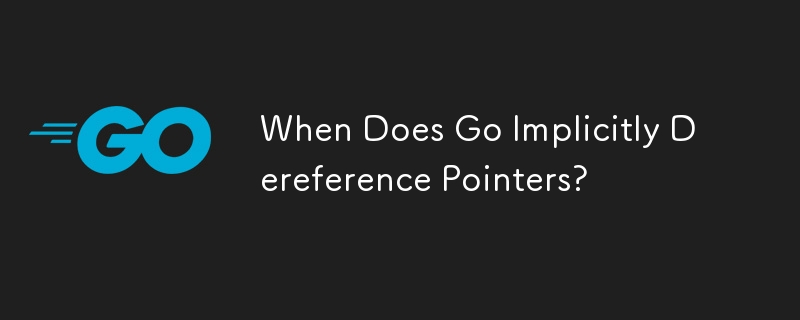Home >Backend Development >Golang >When Does Go Implicitly Dereference Pointers?
When Does Go Implicitly Dereference Pointers?
- DDDOriginal
- 2025-01-04 17:43:43746browse

Understanding Dereferencing in Go Pointers
When working with pointers in Go, understanding when dereferencing is necessary is crucial. The period operator (.) automatically dereferences pointers, as in the example below:
ptr := new(SomeStruct) ptr.Field = "foo"
However, there are other scenarios where Go implicitly dereferences pointers. Selectors, as defined in the Go specification, automatically dereference pointers to structs. For example:
ptr := new(SomeStruct) x := ptr.y.z
In this case, x is a value of type z (assuming y is a pointer to a struct). Go will automatically dereference ptr and ptr.y to access the value of z.
Arrays also demonstrate implicit dereferencing. According to the specification, an array pointer can be indexed with the following syntax:
a[x] is shorthand for (*a)[x]
Therefore, if ptr is an array pointer, ptr[0] will dereference ptr and return the value at index 0.
Overall, Go's implicit dereferencing behavior simplifies code and enhances readability. Understanding when and how it occurs is crucial for effective programming in Go.
The above is the detailed content of When Does Go Implicitly Dereference Pointers?. For more information, please follow other related articles on the PHP Chinese website!

